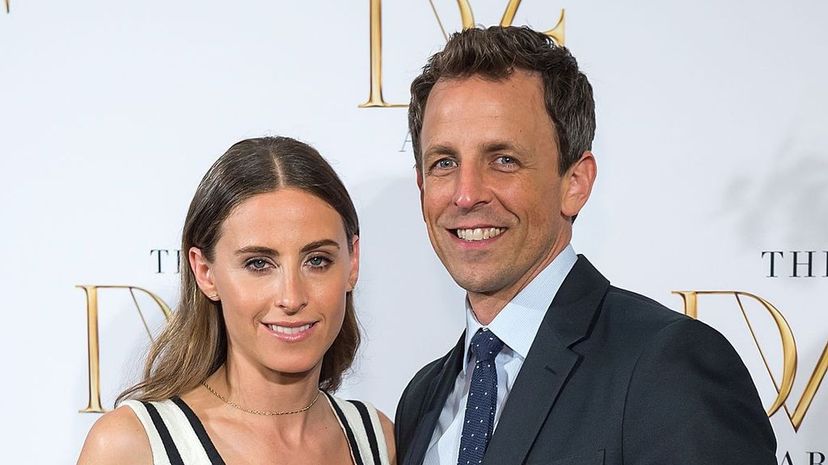 “Seth Meyers and his wife Alexi Ashe (shown attending the 2015 DVF Awards at the United Nations) sure look like siblings. Michael Stewart/FilmMagic/Getty Images
“Seth Meyers and his wife Alexi Ashe (shown attending the 2015 DVF Awards at the United Nations) sure look like siblings. Michael Stewart/FilmMagic/Getty Images
Have you ever seen a married couple that could easily pass for brother and sister? Such pairings are hardly an anomaly, according to the results of a recent study published in PLOS Genetics. This first-ever multigenerational mating pattern analysis conducted in the U.S. reveals that most of us probably do have a "type" after all, and it probably resembles what we see in the mirror every day.
Researchers used data gleaned from participants of the Framingham Heart Study, which has followed multiple generations of Framingham, Massachusetts residents since the days post-World War II. The study was commissioned to figure out why people develop cardiovascular disease.
For the current study, genetic data from 8,507 participants was examined, most of whom are white. The group features original participants, as well as spouse-pairs from their offspring. The study looked at genotype data, and observed that people of Ashkenazi descent (Jews originating from eastern or central Europe), as well as people with northern and southern European ancestry traditionally have chosen mates of similar genetic ancestry, who probably lived in the same community. However, the practice has actually decreased with each passing generation, particularly among the latter two groups.
"Mate choice reflects a large number of factors including local geodemographics, social class, nationality, ethnicity, religion, anthropometric traits such as height and weight, as well as behavioral characteristics," the researchers wrote in the study.
Despite the relative continuation of mate choice based on these characteristics, the study also found that endogamy (marrying within community limits) has declined over the past 60 or so years. Times certainly have changed. "Our findings clearly document the strong endogamy that existed in Framingham prior to World War II. These patterns may also have reflected neighborhood characteristics, and the tendency for unions to occur locally," the researchers write. "Intermixing between participants with Northwestern and Southern European ancestries was relatively uncommon in the original cohort, but increased in subsequent generations. Similarly, there was a strong tendency towards endogamy in the participants that clustered along PC2, implicitly those with Ashkenazi ancestry."
Will the trend of marrying people who look and are genetically similar to us continue? Only time (and research) will tell.
Now That’s Interesting
Understanding the impact of genetic similarity with a particular group or region is important, especially related to certain disorders. Ashkenazi Jews, in particular, are disproportionately affected by the genetic disorder cystic fibrosis.



























